Copenhagen’s culinary credentials have shot through the roof over the last decade and it’s only on the up, as Michelin stars and Smørrebrød pit-stops multiply and street food markets take over pockets of empty land.
Meanwhile, trendy natural wine bars and artisan bakeries are popping-up faster than you can eat a Danish pastry. We pick 10 of the best places to eat and drink during a trip to the city.
Gro Spiseri
Climb the office park spiral staircase in the city’s Østerbro district, and you’ll arrive at Gro Spiseri, an off-shoot of the ØsterGRO rooftop farm. ØsterGRO was founded in 2014 as an educational project creating local and sustainable produce for the community, and the restaurant followed. Open for two sittings a day from March to November (5.30pm and 8.30pm from Thursday-Saturday) – there’s something joyful about sitting meters from the ingredients growing on your plate.
Enjoy a pre-dinner chat over a glass of natural wine or cider whilst marvelling at the rooftop views before taking a seat in what must be Scandinavia’s smallest restaurant space – a candlelit conservatory fit for a family-style sharing feast of farm-to-fork small plates. Served and explained in detail by the chefs, the sharing dishes – such as cod tartare with oyster cream and chard; mini cheese; lamb tartare and cheese tarts; and desserts of ricotta cream, pear syrup and beetroot meringue – will have you fighting forks with your neighbour.
Simple yet innovative – ultimately allowing the ingredients to shine – Gro Spiseri is a Danish dining dream, a stripped-back alternative to some of the prices and pretension of the city centre.
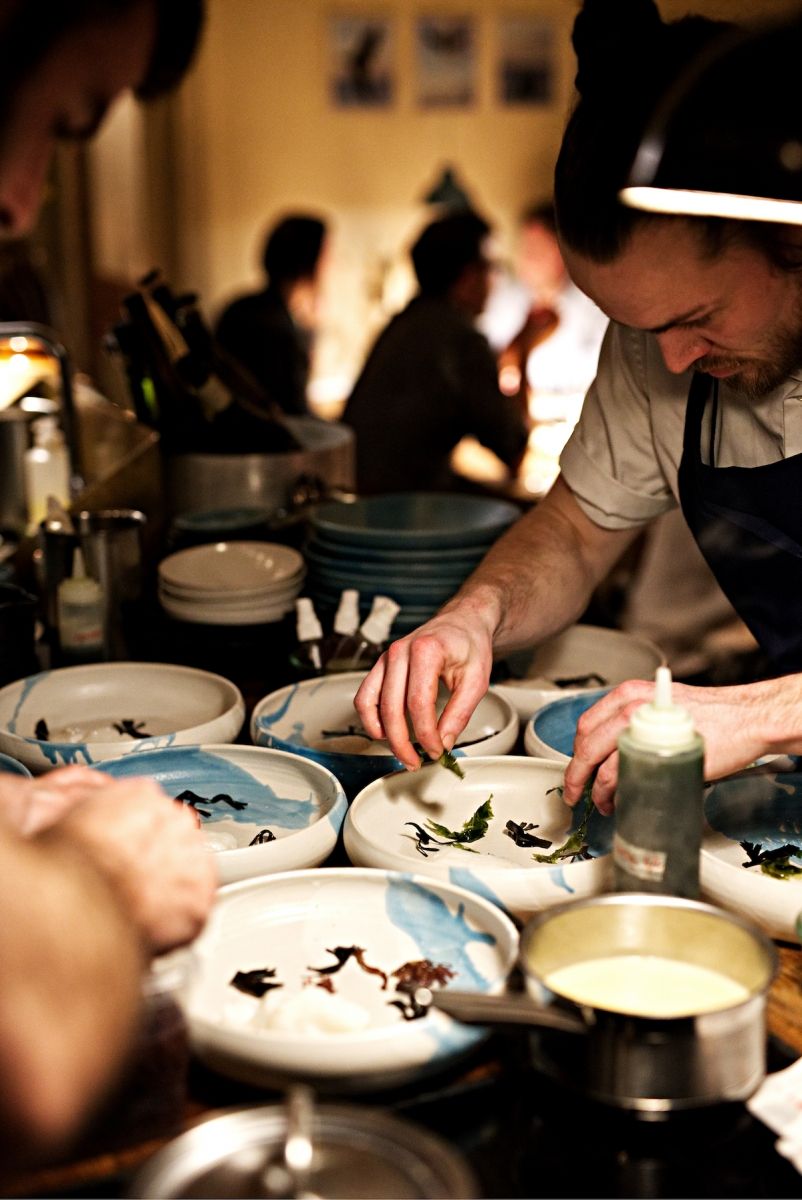
La Banchina
Grab a City Bike and enjoy the ride across Inner Harbour Bridge to the creative Refshaleøen island, where you’ll weave your way along the canals and past the cabin-like houses to La Banchina. Despite its discrete location, word of this 16-cover former shipyard shed is very much out, and deservedly so; this dreamy waterside spot serves up breakfast, lunch and dinner daily and it can be tricky to get a seat.
‘Dip, eat, repeat,’ is the mantra here, as visitors can enjoy a pre- or post-dining swim in the (apparently clean) canals or enjoy the on-site sauna. Chef Kieran McLaughlin’s fish and plant-based menu is an experience of ingenious execution and is surprisingly refined against its rough-and-ready, yet undeniably charming backdrop. The offering varies depending on the time of year, but McLaughlin’s repertoire includes dishes such as pike perch with pistachio and herbs; oyster ravioli and mussel broth; and cod with beurre blanc and ramson oil. Don’t be alarmed by a scattering of the odd Scandi surprise: ants, so they say, are very high in protein. Sit by the window for the best sunset views in the city and allow the team to take care of the wine pairings. Finish the experience outside, toast the evening whilst getting toasty alongside the wood-burning fire on the restaurant’s own jetty.
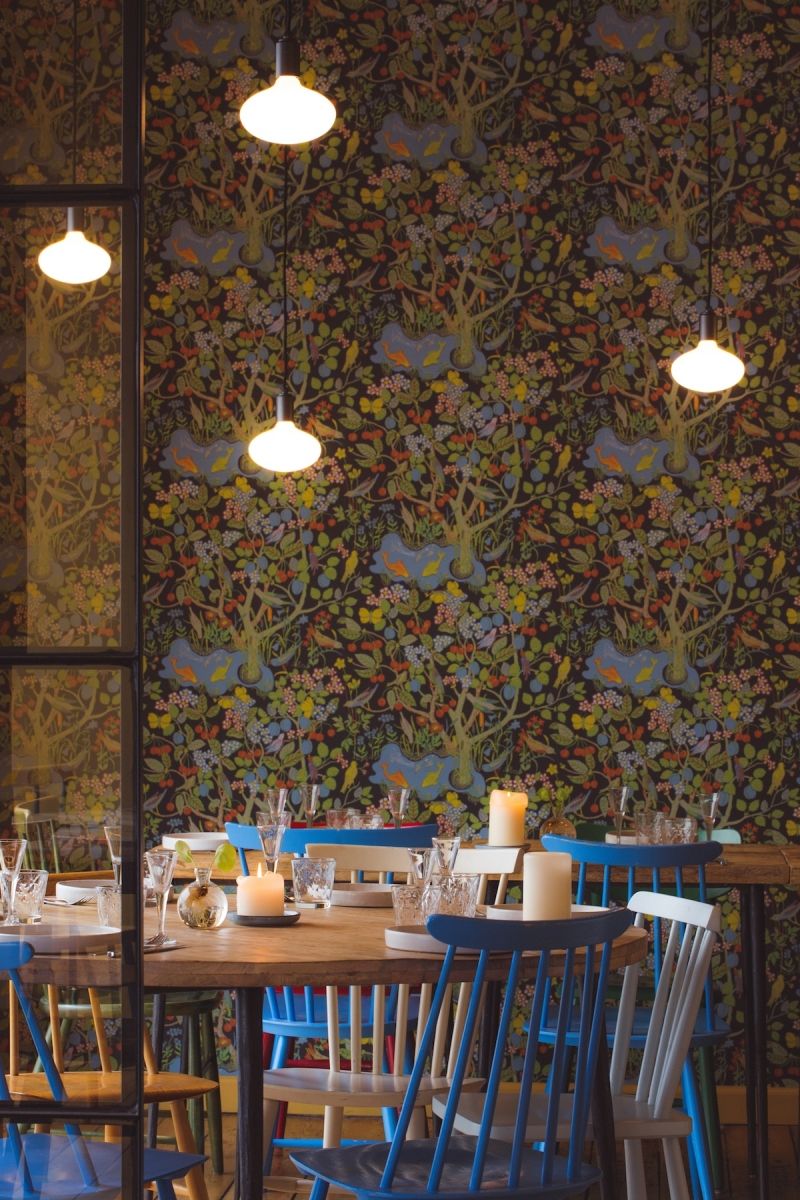
Selma
Smørrebrød is a serious sport in Copenhagen, and nowhere does it quite like Selma. As the city’s only Smørrebrød restaurant with a Bib Gourmand, chef Magnus Pettersson’s open sandwich wizardry gives way to a playful, perfectly executed menu showcasing the plethora of possibilities when it comes to piling ingredients onto bread. Located close to the Kings Garden (Kongen Have) – its cosy candlelit interiors seat 20, serving lunch and dinner.
Choose one or two dishes from the 14-strong selection of innovative Smørrebrød, which includes blackcurrant herring with crème fraiche, red onion and buckwheat or the shrimp Smørrebrød with kefir and samphire. A star of the menu is the stand-out, less traditional dish of chicken salad, bacon, beetroot and hazelnut Smørrebrød which is all the more divine for being served on fried bread. Alternatively, eliminate the stress of choice and try ‘the small menu’; five mini open-sandwiches served in succession, chosen by the chef.
Be sure to say yes when offered the accompany shot of schnapps served with your first course – it works wonders with the herring – and conclude with a palate-cleansing rhubarb, white chocolate and cardamom ice-cream for pudding. (N.B. A strong selection of Mikkeller beers are also served on tap here).
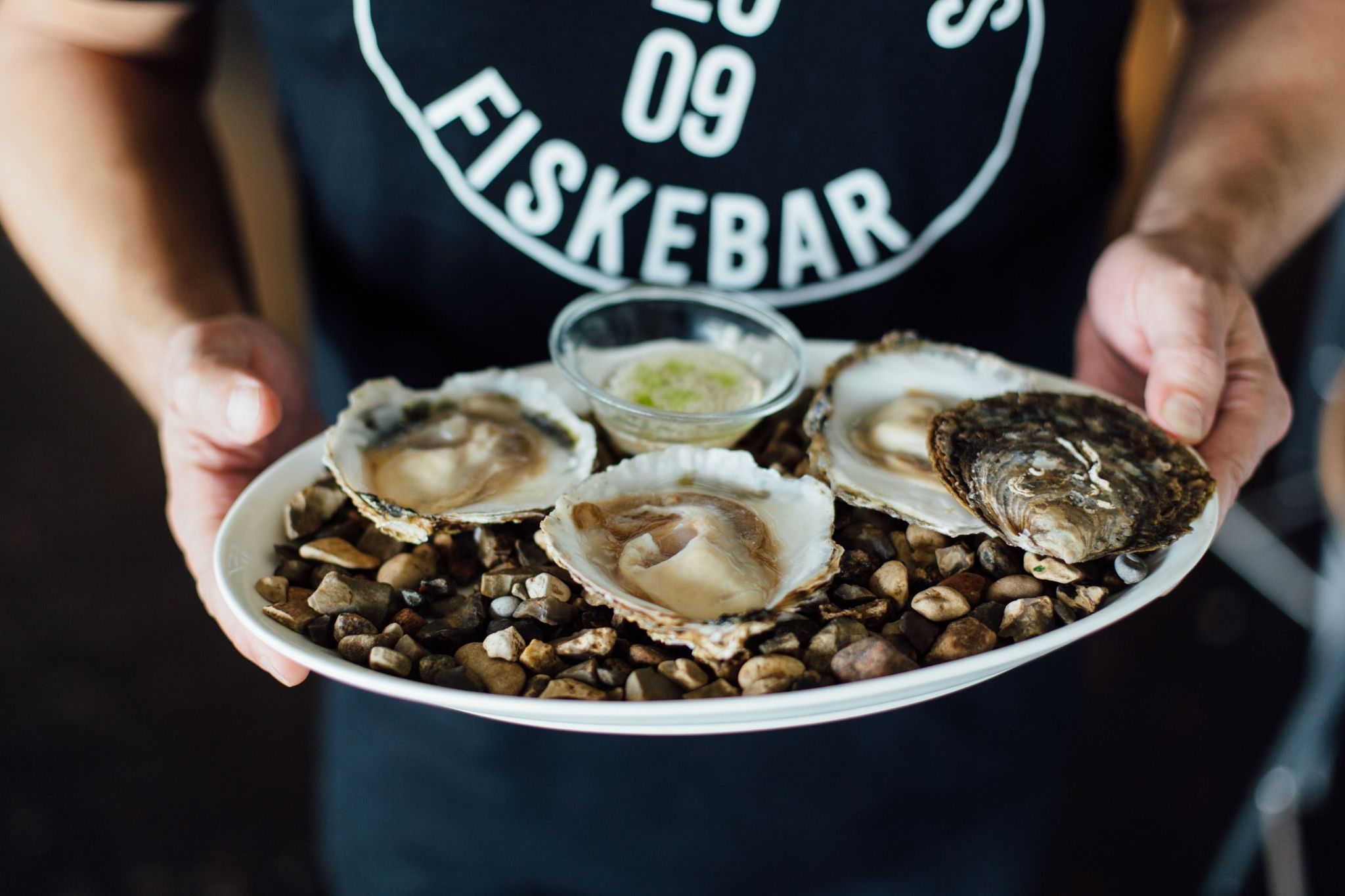
Fiskebar
Under the suspicious looking stone cow guarding Copenhagen’s Meatpacking District in Vesterbro, you can find one of Copenhagen’s finest purveyors of fish. From the outside, its butchery façade remains almost intact, whilst inside its bright and stripped-back interiors provide the ideal environment to showcase seafood artistry from British chef Jamie Lee.
Now approaching its tenth birthday, Fiskebar’s timeless yet pioneering approach to cuisine continues to be cited by chefs and critics as a must-visit on Copenhagen’s over-crowded culinary circuit. Begin a Fiskebar feast with whitebait or oysters, followed by one of the raw starters, such as scallop with Norway cucumber, horseradish and nasturtium. The ‘hot’ starter section boasts dishes including grilled king crab or mussels steamed in cider whilst the selection of mains displays some seriously clever cooking and ingredient combinations such as Jerusalem artichokes, green strawberries, roasted onion butter and Vesterhavs cheese. Every dish bursts with flavour and finesse, while desserts are as pretty as they come. Once again, leave the wine to the sommelier, who will match each dish with an exquisite selection of natural wines sourced from independent producers across Europe.
Mission Copenhagen
If you’ve fallen victim to one too many Smørrebrød – then the Mediterranean/Californian inspired Mission Copenhagen is a much-needed alternative, where it’s possible to eat a little lighter. Or you could argue otherwise, as chef Alex Dadzis’ selection of colourful small plates and pizzas are so good, it’s tempting to order the entire menu twice over.
Describing itself as a restaurant ‘inspired by the cultural mosaic of a land of immigrants’ – the desired diversity of the dishes is a real defining factor of its non-conformist menu.
Stand-out small plates include the fried buffalo cauliflower with blue cheese cream, crispy chicken wings with fish sauce and cherry vinegar dressing, and charred endive salad with apple salsa. The pizzas are made with ancient grains milled locally, and they’re sensationally light whilst luxurious toppings – including mozzarella and truffle or goat’s cheese and rosemary – transport them into a league of their own.
As the latest restaurant to open in the art-deco Standard building alongside Michelin-starred Stud!o and more traditional Almanack (another one great for Smørrebrød), located a stone’s throw from Nyhavn, Mission boast some of the finest waterside views whilst being easier on the wallet than its longer-established sister sites.
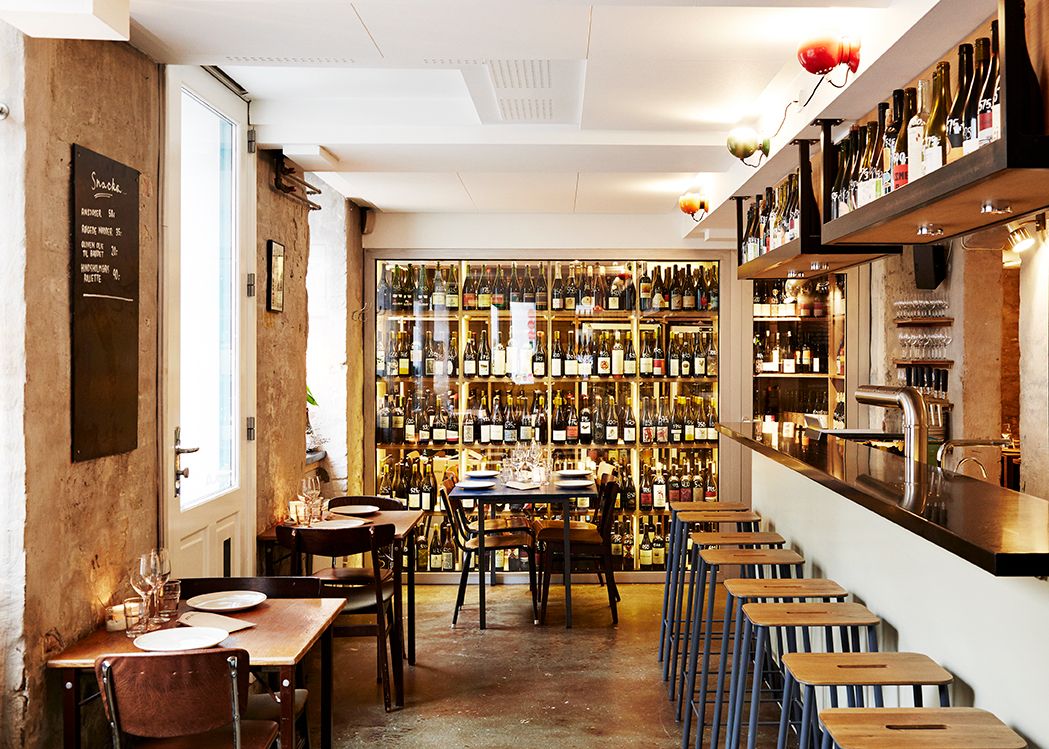
Manfreds
At only 295 DKK (around £35) a pop, Manfreds’ ‘Chef’s Choice’ tasting menu is remarkably good value by Copenhagen’s standards and the most accessible way to experience the food of Christian Puglisi (the Danish equivalent to Simon Rogan). Once famed for being a vegetarian restaurant serving tremendous beef tartare, the offering has evolved in recent years with other meats now making an appearance, although the plant-based philosophy still remains very much at the forefront.
Located on the swanky Jægersborggade shopping street (only seconds from Puglisi’s rather punchier sibling Relæ and famous porridge café Grød), Manfred’s is an informal neighbourhood favourite with a choice of simple dishes to include white asparagus, ramson and lardo, Hindsholm pork with salsa verde or ancient grain salad with fresh ricotta and almond. Meat-eaters must experience Manfreds’ delicious house dish – to be enjoyed as a prequel to the small plates, or swing by and take a seat at the bar and order only the tartare, in large – best devoured whilst sampling the restaurant’s ever-changing wine list.
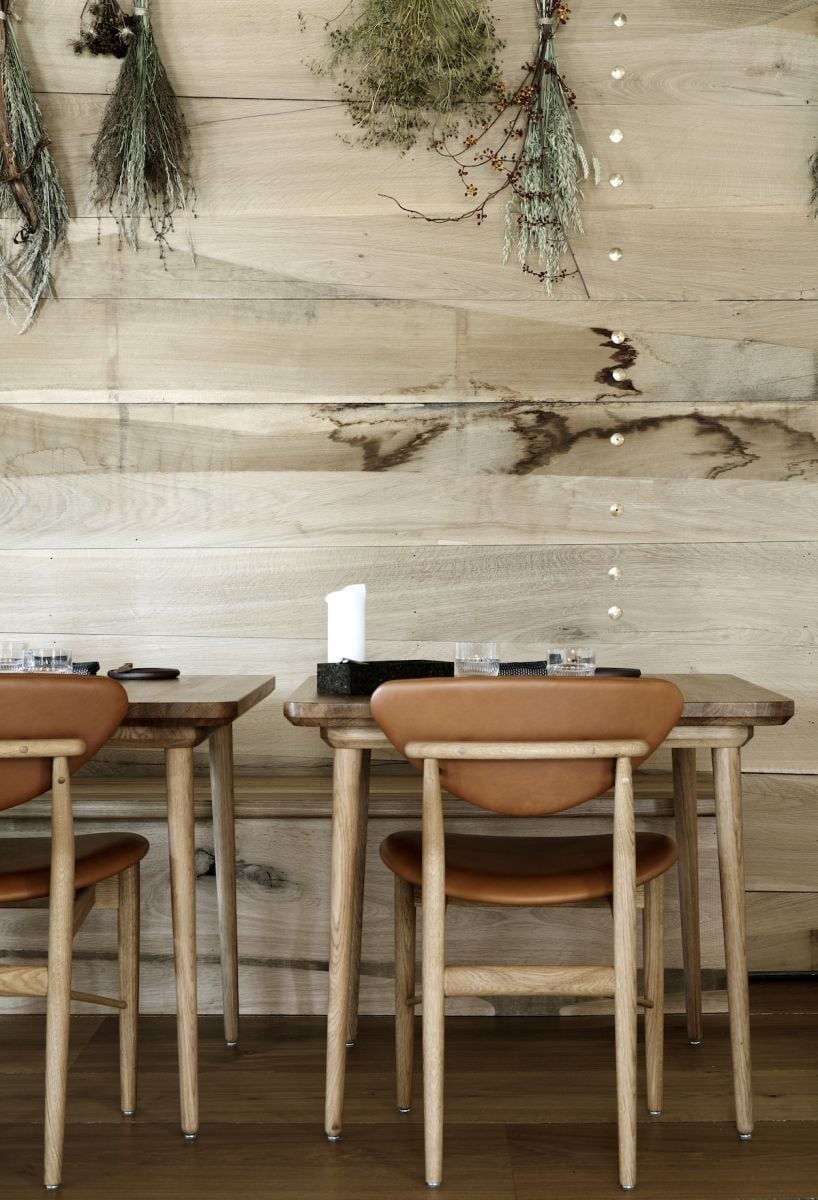
Barr
Talking of tartare, Barr serves some of the best in the city (although not as you’ve seen it before), available alongside an eclectic menu of dishes inspired by the North Sea. Housed within the former Noma site (next door to Bridge Street Kitchen) and still under Redzepi ownership, the former warehouse has been redesigned to within an inch of its 300-year life. Crafted around the building’s original beams from custom Danish oak and dotted with leather chairs; the aesthetic is jaw-dropping – with surfaces so smooth and shiny it’s a surprise no one takes their shoes off to skid across the floor.
Barr (meaning “barley” in old Norse) is run by chef Thornsten Schmidt, whose seemingly simple and somewhat old-fashioned menu descriptions deliberately fail to elude to the sheer sophistication of each and every dish. Whereas the Danish meatball and pork schnitzel remain Barr favourites, a selection smaller dishes – to include the brown crab with Chinese cabbage and butter sauce, as well as the Lumpfish roe served with grilled Belgian waffle and soured cream – still give justice to the brilliance of Barr. And be sure to have the bread, worthy of a place amongst the main plates in itself.
Beer is a big deal at Barr too, and the restaurant boasts more than 15 on tap alongside a mixologist specialising in beer and aquavit cocktails. The bar is the ideal spot to swing by for a tipple and schnitzel for tea, yet solo diners can enjoy a seat in front of the seriously impressive kitchen, possibly Copenhagen’s most state-of-the-art, and a front-of-house team who seem more than happy to chat.
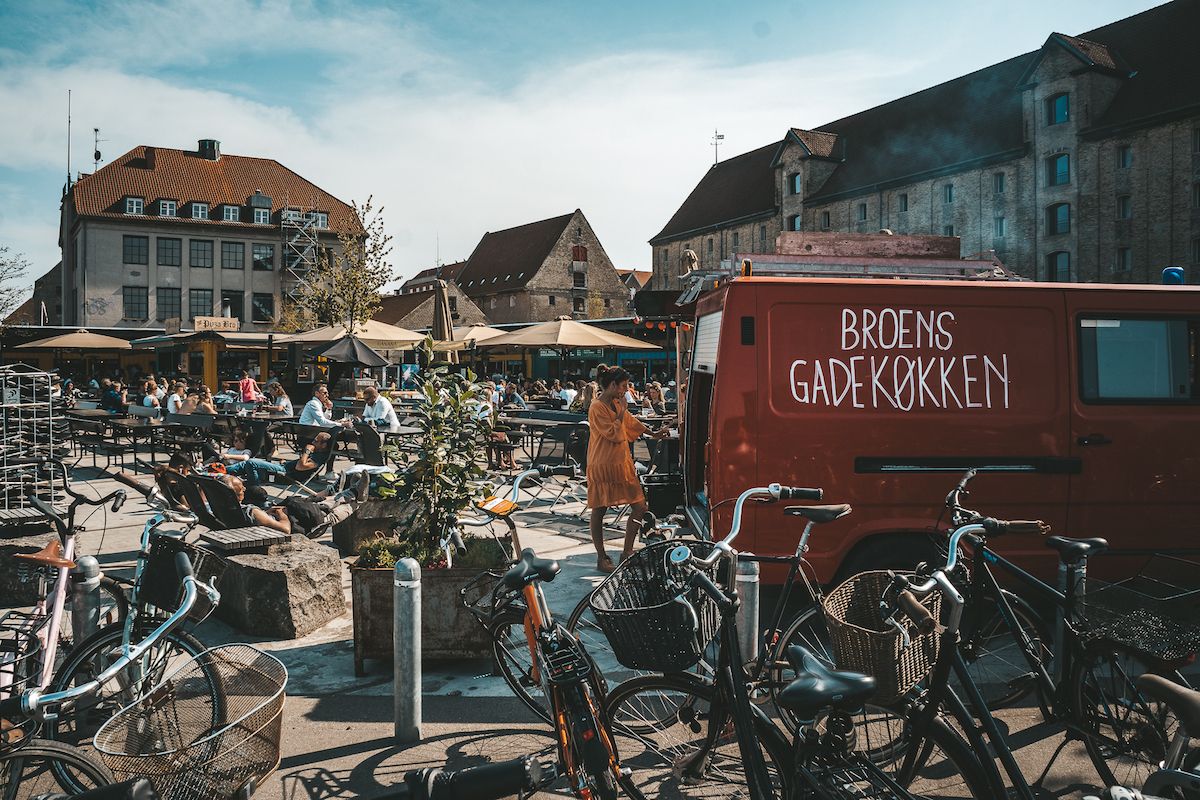
Bridge Street Kitchen
Those mourning the loss of street food mecca Papirøen (Paper Island) have been consoled with an alternative street food fix, as 2018 saw the opening of Bridge Street Kitchen. Located a couple of minutes’ walk from its neighbouring predecessor on the Christians side of Inderhavns bridge, you’ll be spoilt for choice with offerings from vendors including Haddock’s, GRØD, Kejser Sausage and Will at the Bridge, plus beer and wine outlets by the bucketload. While the canal-side views and range of choice of Papirøen may be lacking, the vibe is certainly not.
To experience the official Papirøen replacement, take a trip to Reffen – situated about a mile away in industrial Refshaleøen, for 6000m2-worth of street food start-ups. Here, 50 food vendors (to include restaurants, bars and creative workshops) have made their home, whilst all sharing in the philosophy of ‘reduce and reuse’ as sustainability very much leads the way in the Copenhagen culinary conversations of 2019.
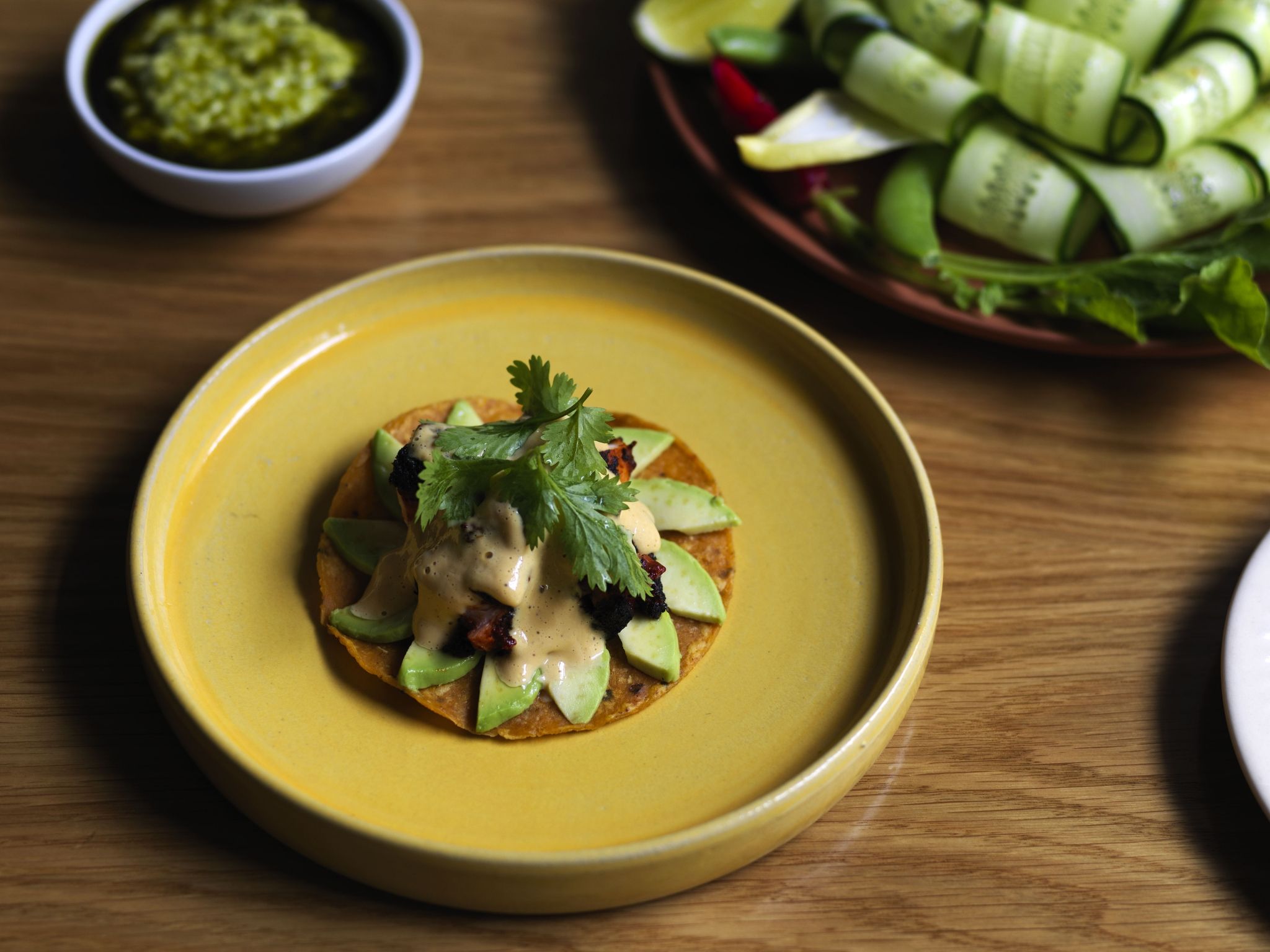
Sanchez
A firm favourite amongst chefs, Sanchez is serving up terrific tostadas and tortillas in an informal yet hard-to-get-into spot in Copenhagen’s trendy Vesterbro district. Chef Rosio Sanchez, the former Noma pastry chef is combining authentic Mexican techniques with Nordic nuances in an environment inspired by a typical Mexican cantina. The restaurant opened in 2016 following the queues outside her first ‘street-food’ style site, Hija de Sanchez, in the city’s Torvehallerne market, before a bricks-and-mortar prospect came calling.
Whilst Hija remains open in the spring and summer, its sit-down, more serious (but not too serious) sibling operates seven days a week. Taking pride in its tortillas, using corn shipped from Mexico, the streamlined menu offers delicacies including grilled oysters with habanero and sea buckthorn; salted cod empanadas with wood sorrel; and larger bites, which include potato taco with cured egg with requeson; or achiote spiced pork with pickled onions. Request a seat at the counter-top for the finest cheffy views in Vesterbro, sip a Mezcal or the restaurant’s own ‘la Hija’ beer made with limes from Yucatán. A weekend brunch is also available but always be sure to book.
Wullf & Konstali
Bucking the trend of menu simplicity, Wullf & Konstali isn’t leaving any option unturned. Get inventive with its popular pick ‘n’ mix style menu, and curate your own breakfast board from a list of 22 options. With everything from eggs to grilled grapefruit, creamy feta with olive oil, green salmon mousse, and purple quinoa porridge. The list goes on. Serving brunch daily at one of its four sites in the city, the Island Brygge café boasts light, bright interiors and plenty of seats to dine al fresco. Diners are invited to choose five or seven options to include a coffee or tea (for around £10 – £16), each served separately in a succession of little dishes and delivered to the table on a single board. Keep it traditional or get crazy with your combinations. We recommend the poppy seed waffle served with lemon zest cream, with chorizo sausages on the side.
Furthermore, for a city-centre breakfast spot, try the effortlessly chic Atelier September and its to-die-for zucchini granola and a pastry chaser, or one of the two award-winning Far’s Dreng, which serves up breakfast Smørrebrøds, acai bowls and more.

